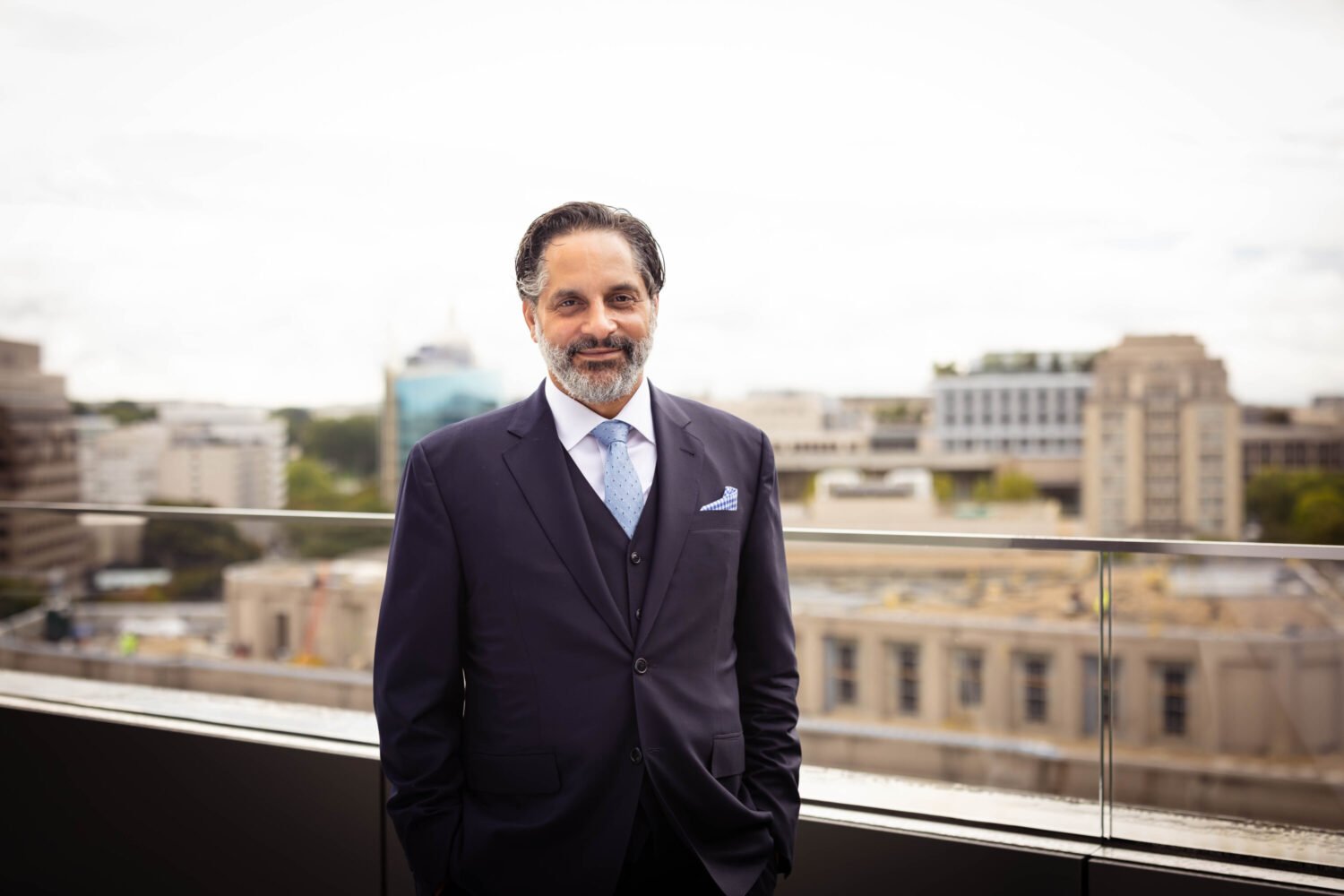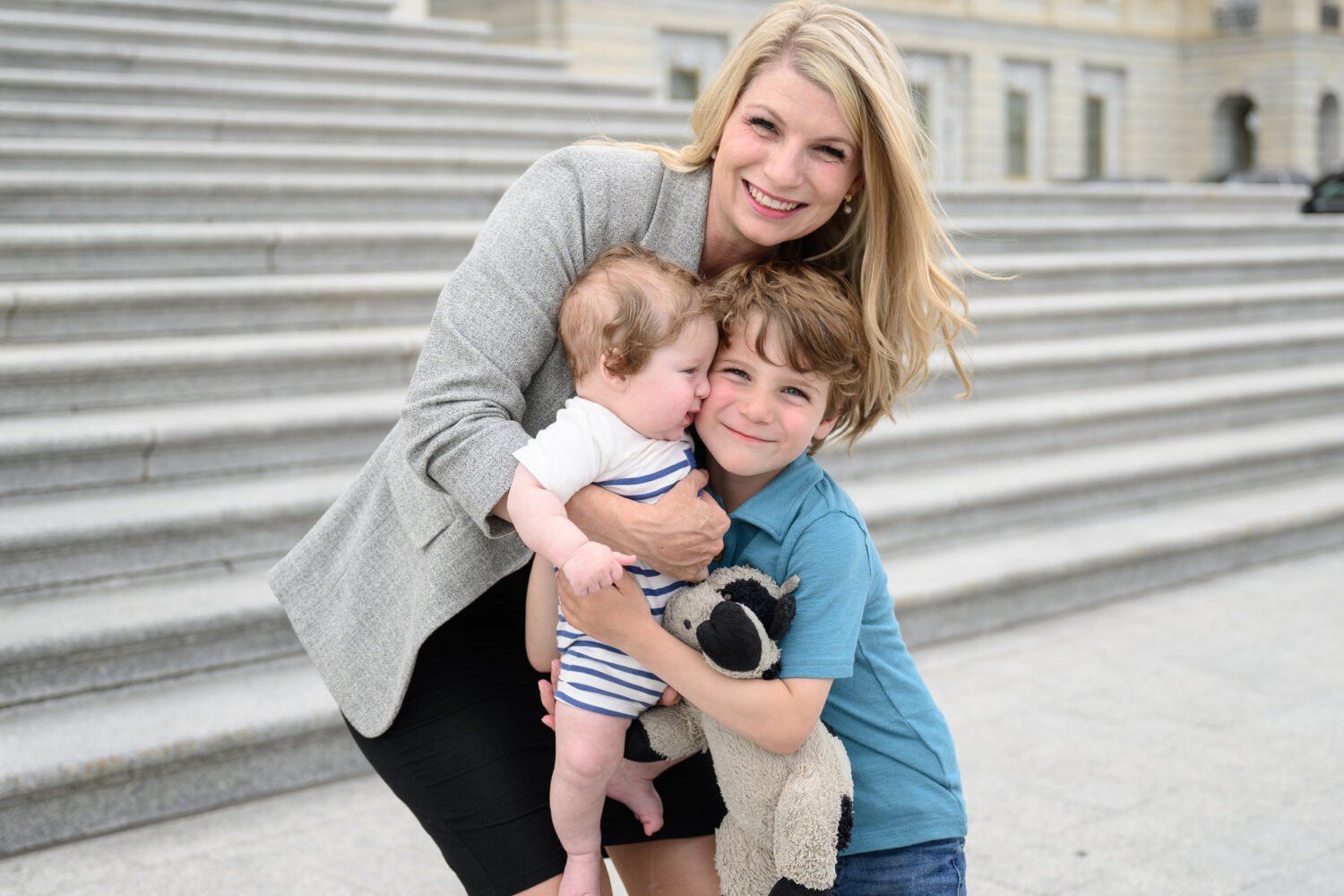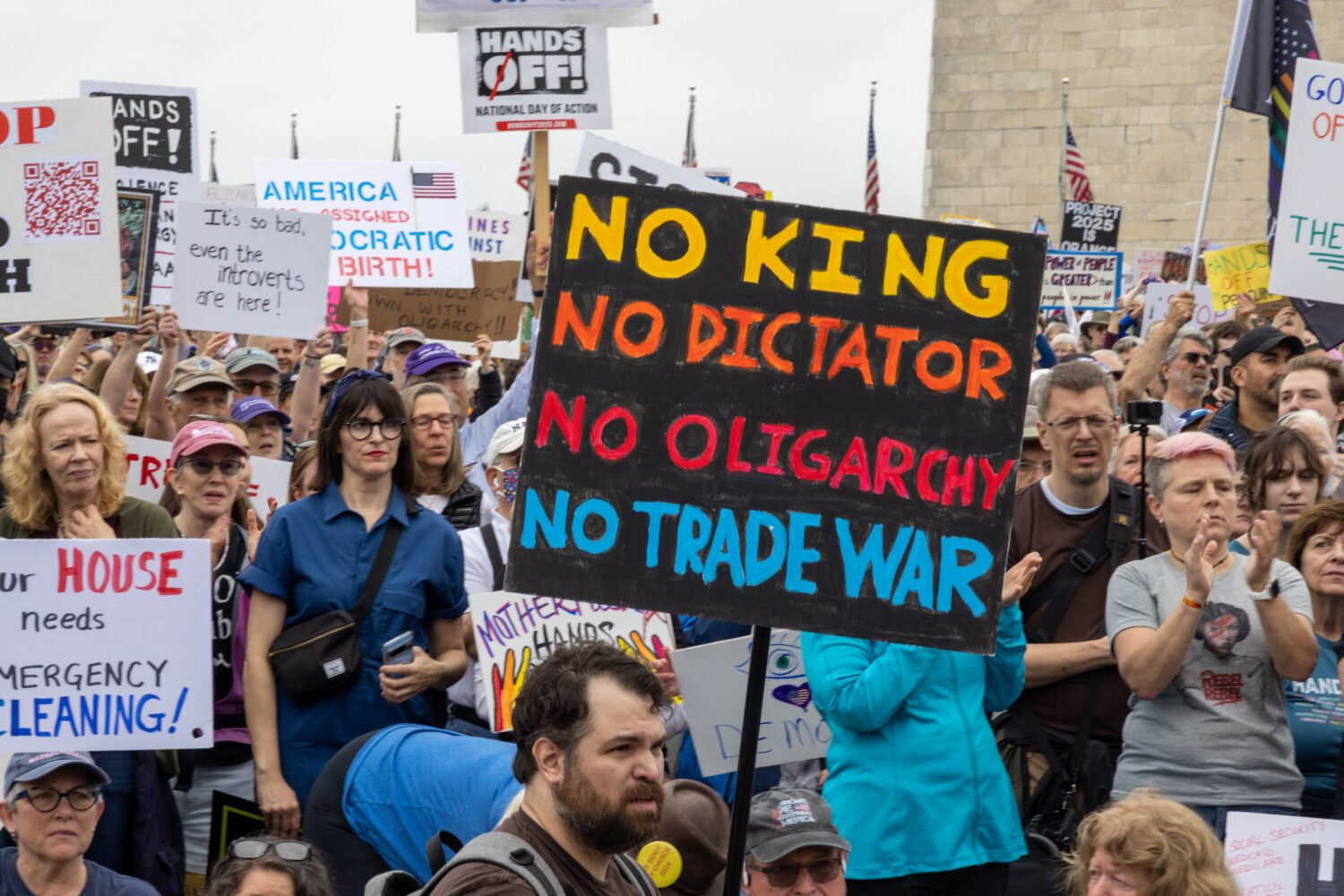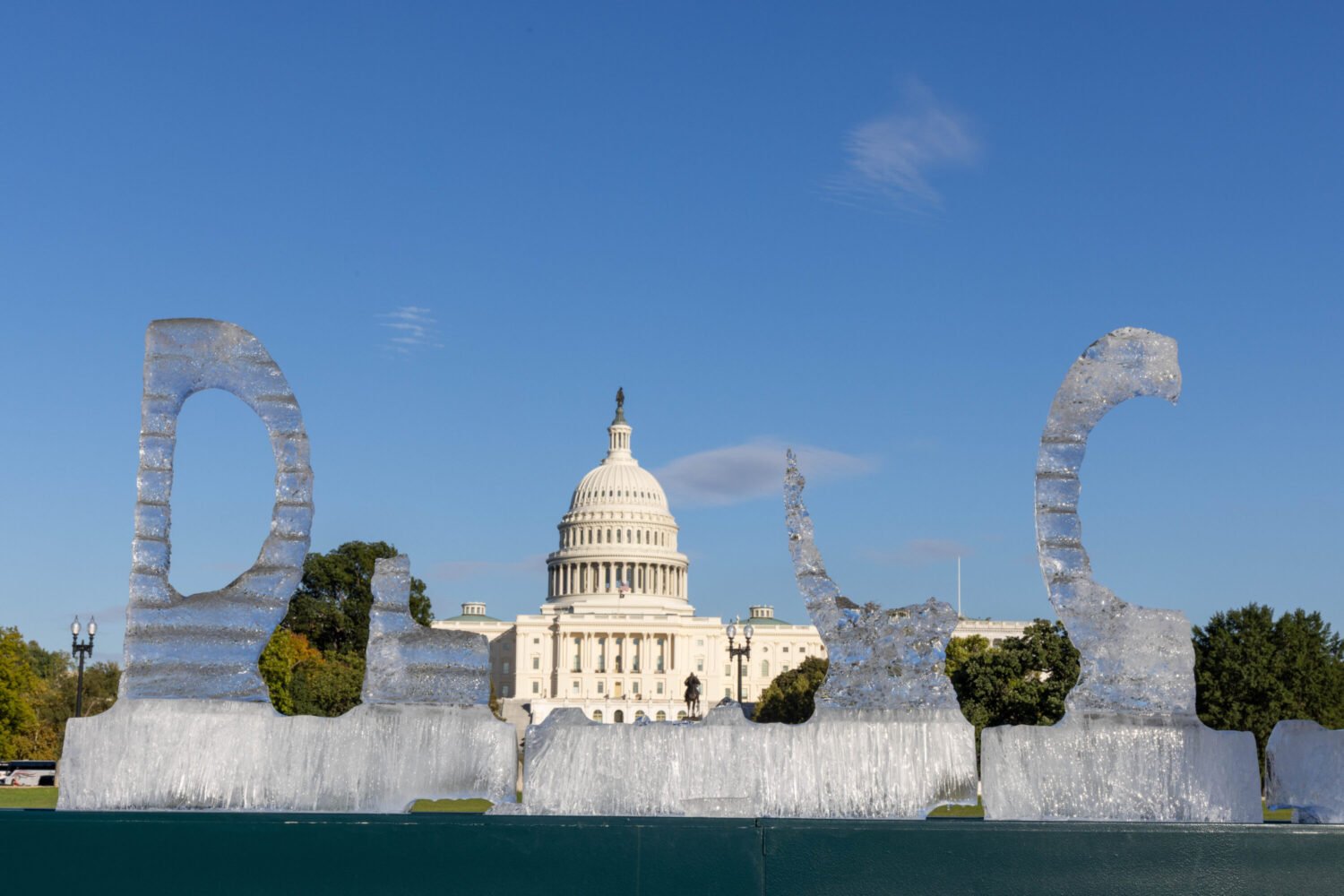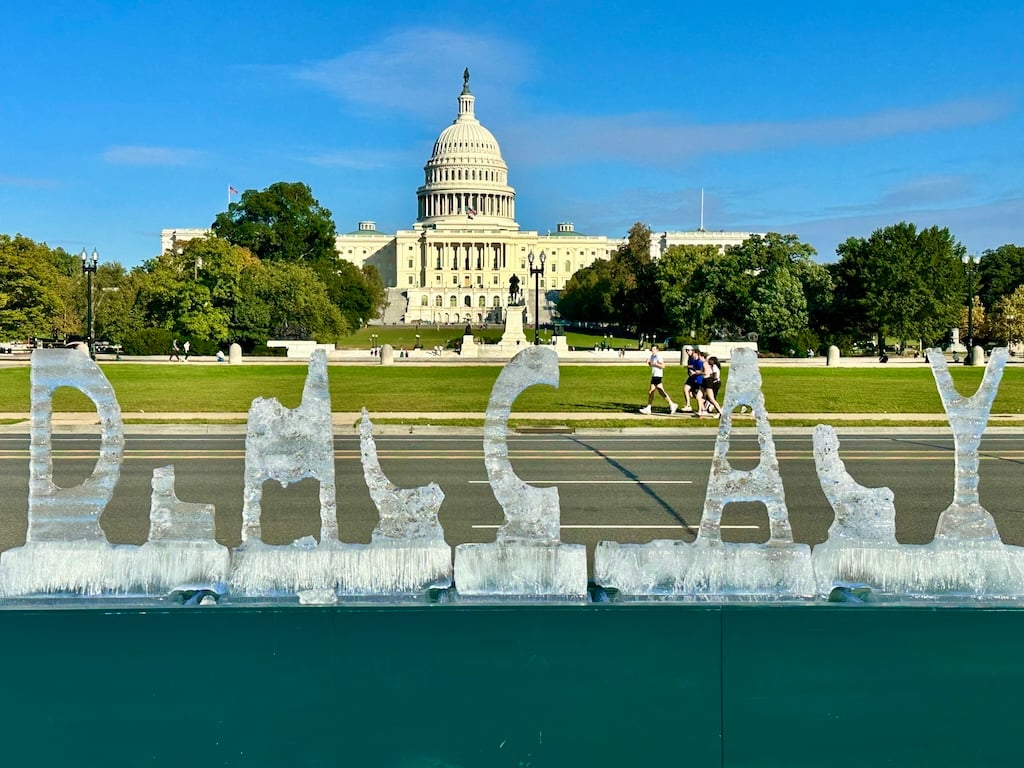Sometime in the 1970s, I began to view myself as essentially a bookseller—or maybe just a book scout. The hunt for books was what absorbed me most. Writing was my vocation, but I had written a lot, and it was no longer exactly a passion.
One of the biggest events in my life was the disposal at auction of the stock of the long-dominant bookselling firm of Lowdermilks, on F Street in downtown DC.
This occurred in early 1970. I was in Los Angeles working on the screenplay of my novel The Last Picture Show and had to fly the redeye in order not to miss the first day of the sale. My bookselling partner, Marcia Carter, and I had decided we wanted to run a bookshop together. The Lowdermilks auction seemed a good place to start. The dispersal of the store’s huge stock was the real beginning of Booked Up, the Georgetown shop Marcia and I ran for 32 years.
Lowdermilks occupied three floors of a large old building. The third floor hadn’t been visited, except by favored customers, for about ten years—or at least that was the legend. This floor contained a huge accumulation of 19th-century books. Because I had been in Hollywood during the viewing period, Marcia and I went into the auction flying blind.
Freeman’s, the auction firm, had the task of disposing some half a million volumes in a short time. This was not the famous John Marion of Sotheby’s trying to coax one more million out of a rich bidder for a fine Cézanne. Getting these half a million books sold required pace, not finesse. The cataloging was the simplest kind; a typical entry might read “600 volumes literature” or “400 volumes biography.” We two, the embryonic Booked Up, concentrated on these large lots, bidding about 25 cents a book. To our astonishment, we ended up with about 1,500 books, all gleaned from the mysterious, dusty third floor.
Marcia and I then began to look for a place to house our bookshop, and we found one on 31st Street in Georgetown. A friend named John Curtis went in with us for a year, after which he moved to Williamsburg, where ever since he has operated an excellent shop called the Bookpress.
We opened with a stock of about 1,000 books and perhaps as much as $1,000 in capital. Soon we moved across the street into less-cramped quarters; in time we expanded into a shop that filled nine apartments on three floors at the corner of 31st and M. From the moment we opened, customers surged in.
My son, James, and I were living in the hamlet of Waterford, about 40 miles away in Loudoun County but still, in the early 1970s, an easy commute: There was only one traffic light between our house and Key Bridge; now there are probably 30. But by the 1980s James had graduated from high school and gone off to make his mark as a singer/songwriter. (It seems to me his best songs are as good as anyone’s best songs. Indeed, I suspect that the mark he has made artistically is more likely to be indelible than the mark I have made. Great songs outlast all but the greatest prose.)
With James gone, it was no longer necessary for me to commute. From 1980 on, I lived in an apartment above the shop and also, unfortunately, above the discos of M Street, which pushed out their rowdy clientele about 2 am. I finally got a white-noise machine, which, if set on “waterfall,” more or less held its own with the revelers.
Word got around that the tiny bookshop on 31st Street was where one might find interesting books to read—and furthermore, if offered interesting books, Booked Up would buy them at good rates. We were so humble in those days that we kept a wall of books priced at $2 each. Even Alice Roosevelt Longworth came. She was the daughter of Teddy Roosevelt and had been something of a social terror in Washington for seven or eight decades. She wandered in wearing a big, floppy hat and bought two mysteries.
Mrs. Longworth was said to be an omnivorous reader, reading far into the night in her big house near Dupont Circle, where she lived with her granddaughter Joanna Sturm. On two occasions, we were invited to buy books from Mrs. Longworth, but neither time did we actually enter her house. The books were brought down and piled under a porte-cochère, and Sturm handled the transaction. The books were excellent, and the arrangement suited us fine.
When Mrs. L. died, the remaining books passed into Sturm’s possession. We more or less gave up hope of getting any more, but we were wrong. Sooner or later, everything gets sold. One day, Joanna Sturm walked into the bookshop and asked if we’d like to buy any more of Granny’s books. Of course we would, we said.
It seems—I have no idea whether this is true—that Joanna wanted to buy a BMW motorcycle, which cost about $7,500. We happily gave her that amount, and I spent a day rummaging under stairwells and in closets in Mrs. Longworth’s house until I had a carful more of her books.
The antiquarian book trade is healthily cannibalistic. Dealers constantly munch on one another’s stocks. In some years, more than half of our gross sales come from dealers. Many of them are English.
Washington is an Anglophilic city—lots of British dealers come through, or used to. Most of them were in Washington to sell books to one or another of the important libraries in town—the Library of Congress, the Folger, the National Gallery.
Once Booked Up moved into larger quarters across 31st Street, dealers began to pour in. Our shop looked the way many English bookshops used to look, and our books were the sort once commonly available in English shops: literature, history, art, sport (in the English sense, which means field sports), horses, gardens, color-plate books, cookery, travel, and the like. Also, our prices were low. In times when the dollar weakened against the pound, as it often did, the English dealers hardly bothered to look at the prices—they just piled up what they wanted.
The first time I noticed the importance of exchange rates involved our friend John Saumarez Smith, managing director of G. Heywood Hill, a shop in London’s Mayfair that sells both new and old books.
At the time of Smith’s first visit, we had just bought an excellent library from a crusty retired diplomat with a younger and very beautiful wife. In a room on a lower floor of his house, there were at least a million dollars’ worth of bird books, but these belonged to the diplomat’s former wife. We weren’t allowed to touch them. Still, we bought a carful of very nice books—though I remember with longing the one we didn’t get: a beautiful copy of T.E. Lawrence’s Seven Pillars of Wisdom, worth $50,000 these days.
Among the books we did get was an expensive fine-press book illustrated by Rex Whistler. It might have been Gulliver’s Travels; I recall that we put a stiff price on it: $2,000 or maybe more. John pulled the book down and looked at it two or three times, but he seemed a little doubtful and reluctantly put it back. On his next visit, a year later, the exchange rates had shifted in his favor, and he bought the Whistler book without a moment’s hesitation.
In 1972, thanks to the success of the movie version of The Last Picture Show, I became, briefly, a hot item on the Georgetown dinner-party circuit. After all, Jack Kroll, then Newsweek’s film critic, suggested that The Last Picture Show might be the best American movie since Citizen Kane. Wow! And there I was, helping to run a bookshop on 31st Street.
In three months, my fame ended as the movie was crowded out by other movies. Throughout the next 20 years, my social viability rose and fell according to the success not of my books but of my movies. When Terms of Endearment won the 1983 Best Picture Oscar, I once again soared briefly; the same thing happened when Lonesome Dove, a TV miniseries made from my book, reaped big ratings for CBS in 1989.
Long before this, I had seen through the Georgetown setup, such as it was. Washington is a civil-service town in which the stars are not politicians or bureaucrats; the stars are journalists. In my time, the major players were Joe Kraft, Joe Alsop, Ben Bradlee, Katharine Graham, Bob Woodward and Carl Bernstein, I.F. Stone, David Halberstam, Neil Sheehan, my Texas friend Larry L. King, Barbara Howar, Henry Fairlie, Willie Morris (occasionally), Evans and Novak, and others.
What depressed me most in DC was that the various great houses I was invited to contained so few books. Joe Alsop was the exception—he had a three-story house filled with books, and he had read them.
In our 32 years in Georgetown, Booked Up sold only one real book to a member of Congress. Senator Charles Mathias of Maryland bought a very fine edition of Gibbon’s The Decline and Fall of the Roman Empire from us, and he read it. Otherwise, the only sale we made to a member of Congress was a $4 book on cartooning that we sold to Bob Eckhardt of Texas, who aspired to be a cartoonist. Gary Hart, pre– and post–Donna Rice, often browsed, but I don’t recall that he bought.
If there was a true reader in Washington—after Joe Alsop and me—it was probably the distinguished diplomat David K.E. Bruce, who scattered thousands of books among at least three residences, one of them only a few blocks from our shop.
Bruce was about as well born as it’s possible for an American to be. His wife, Evangeline—called Vangy by her intimates, of which I was not one—had the most celebrated salon in Washington during my years there. I was invited a couple of times and went, recognizing that salons organized by great society ladies—at which important people from the government, business, or the arts mingled and exchanged pleasantries—would soon be a thing of the past. I would have been a fool to decline.
At Evangeline’s brunches, she liked to serve quail eggs (good) and honey-soaked bacon (bad). The one time I went to dinner at Evangeline’s house—David Bruce was “late” by then—the guests of honor were Roy Jenkins, a jovial-enough English pol, and Conrad Black, the tycoon recently convicted of fraud at a trial in Chicago. Lord Black is now, I believe, in jail—but, hey, what’s a salon without a rogue or two?
Unfortunately, my visits to Evangeline’s salons told me nothing about the Bruce books, which were upstairs. I knew, however, that David Bruce read a lot of history because I often picked up books with his signature in them at charity sales.
My appetite was whetted by John Saumarez Smith’s frequent visits. He stayed with the Bruces and would occasionally avail himself of packing privileges at Booked Up. John got many fine books from the Bruces, but once international postal rates began their ominous rise, a lot of the books the Bruces owned didn’t justify the cost of getting them home to Mayfair. Many of these books eventually came to us.
In 1991, I had quadruple-bypass surgery at Johns Hopkins. The trauma this occasioned has been described in my book Walter Benjamin at the Dairy Queen. The operation took me out of active bookselling for nearly five years, a long and painful interruption.
Fortunately, we had at the time a solid stock of some 75,000 volumes in DC, spread through two buildings and many rooms. But five years is a long time; the shelves began to thin out. My old friends Lou and Ben Weinstein at the Heritage Book Shop in Los Angeles were having the opposite problem. They needed to make some space and proposed to sell us about 5,000 books from the room that held their low-end moderns. Low end to the Heritage at that juncture was any book priced $500 or less. That suited us fine. The books were sent to DC, and our stock was nicely perked up.
I returned to full-scale bookselling in the mid-’90s, and we continued to buy excellent books. Evelyn Nef, widow of the Arctic explorer Vilhjamur Stefansson, sold us some. Stefansson’s main library is at Dartmouth, but Nef kept some excellent duplicates and was glad to sell them to us.
Thus we acquired the only copy we’ve ever had of the first grammar of Inuit.
By the mid-’90s, though, it was clear that time had run out for us in Georgetown. The building we occupied would soon be acquired by something more upscale: a Pottery Barn, as it turned out, and a fancy spa.
Marcia didn’t want to give up, so we moved back across 31st Street, not far from where we’d started, and she hung on there four more years.
We bought Dr. Winifred Whitman’s wonderful library, but there were now 50 dealers reasonably nearby, and we ourselves got offered less and less. We began to open satellite stores in a number of cities—mostly for buying rather than selling. For a while, my old friend Bill Gilliland ran our Dallas store, where we bought an exceptional W.H. Hudson collection and also some excellent books from Lawrence Marcus, including a very respectable Lafcadio Hearn collection.
After a couple of years, we sucked Dallas dry and moved on to Houston, where we at once purchased 44 “incunables”—books printed before the 16th century. In our 30 years of dealing, we had owned only one incunable, and that was incomplete, so we were very happy about this coup.
About this time it occurred to me to think about my hometown of Archer City, Texas, mainly because there were a few empty buildings there. We outfitted one of them with shelves, and my sister opened a little store called the Blue Pig Bookstore, named after the pigs in Lonesome Dove. The citizenry didn’t know it yet, but Archer City was on its way to becoming a book town.
In the cyber revolution we’re now in the midst of, where do readers stand?
I’m not fully convinced that Borders and Barnes & Noble draw off that many readers from the secondhand shops, and if they do, there’s a rapid flow-through factor. Because, as nearly as I can tell, few young people are forming personal libraries, so the books bought new at the chains soon trickle back into the secondhand market. Unfortunately, there are fewer and fewer secondhand-book shops to absorb these shiny new castoffs.
We ourselves are singularly well placed to observe this, because we have now purchased all or part of almost 30 bookshops.
Bookselling will never quite expire unless reading expires first. The secondhand-book business, both as a trade and as a subculture, has existed for centuries because people want to read, and the assumption on which book dealers work is that people will always want to read. But will they? Seeing the changes that have occurred in the last few years, I sometimes wonder.
Have something to say about this article? Send your thoughts to editorial@washingtonian.com, and your comment could appear in our next issue.
This article appears in the August 2008 issue of Washingtonian. To see more articles in this issue, click here.





